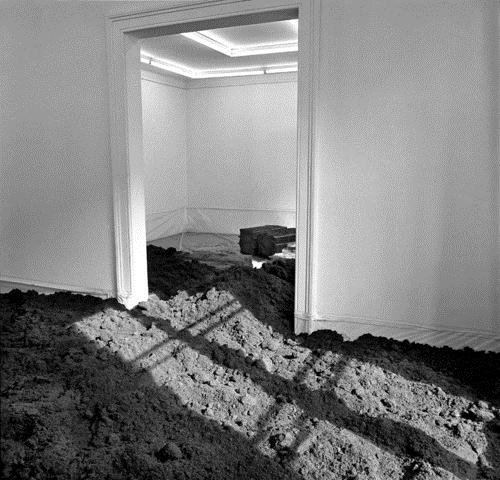Imagine a room full of earth. The air smells of damp soil, quiet, weighty. Footprints soften in the dirt. Walls recede behind layers of ground. Light filters in through high windows, falling in columns onto the surface: rough, uneven, alive.
You step in, and your presence shifts the earth—dust rising, impressions left. It is not a gallery. It is not a stage. It is a threshold: the boundary between home and wilderness.
Here, the room ceases to be separate from the earth beneath and all around. Soil is floor and flesh. Room is not shelter, but union. Dirt becomes texture, memory, a slow pulse you can feel in your bones.
This space asks: what do we do when we live not on earth, but in it? When we are a part of the ground—not its masters—but its feet, its cracks, its breath?
In 1968, Earth Room did not just show soil. It showed belonging. The earth pressed close. The room opened wide. You became the visitor and the ground at once.
